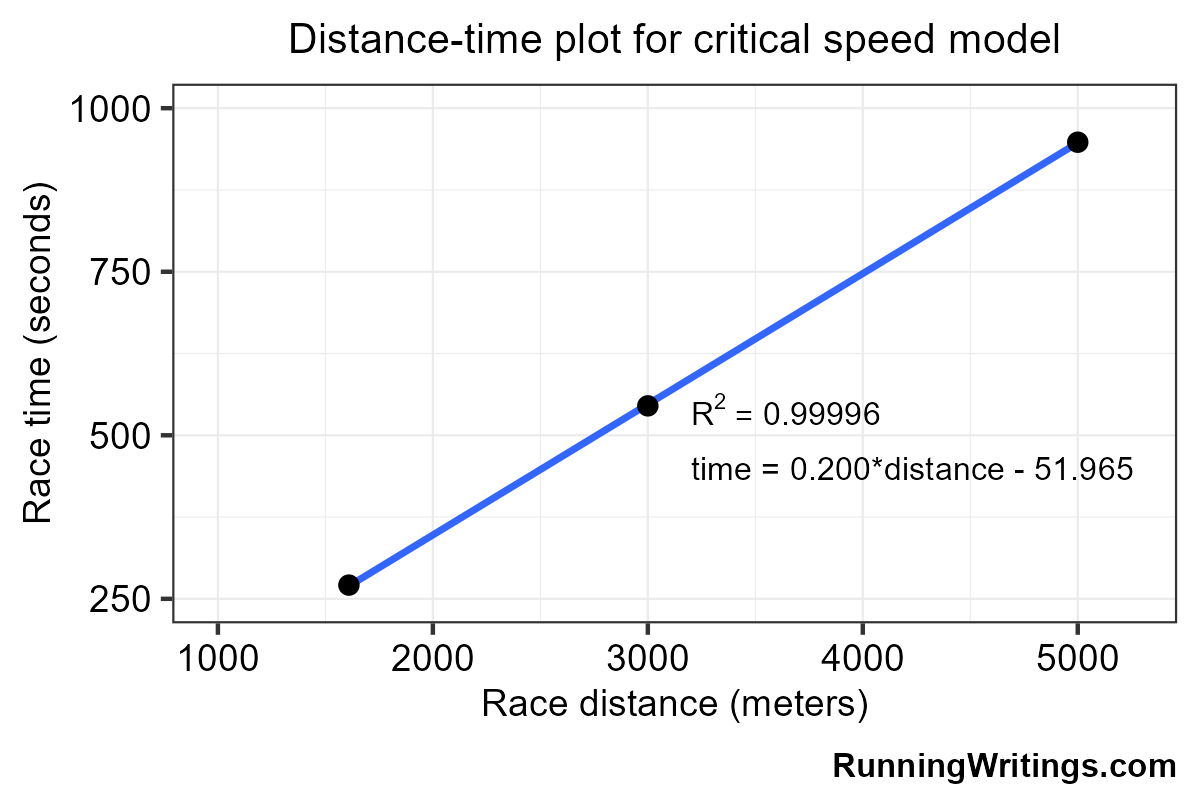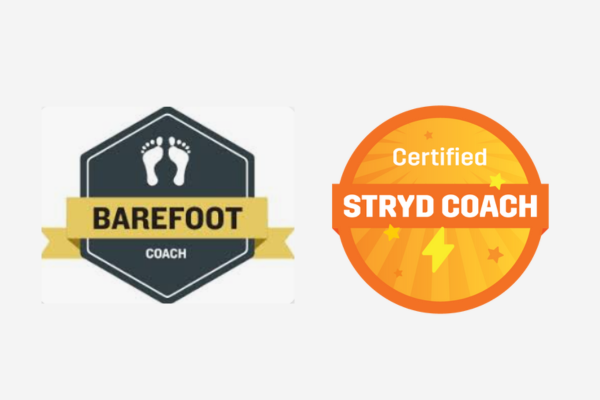- Forward Motion
- Posts
- Training With Precision - The Hinge Part 2
Training With Precision - The Hinge Part 2
How to train precisely; how to measure and apply Critical Speed
Last week, we explored the idea of The Hinge — the critical intersection of endurance and speed that shapes your entire performance curve. This week, let’s turn that theory into practice: how to train precisely around your Critical Speed (CS), find your hinge, and brace it for sustainable progress.
“But Isn’t That Anti-Polarised?”
Not at all. This approach works in perfect harmony with a polarised schedule.
Polarisation tells you how to distribute your training — mostly easy, sometimes hard. The hinge tells you where to spend that limited hard-work budget. Aim for the Critical Speed region, not random, ineffective grey-zone tempo, and not just eye-bleeding sprints.
The goal remains the same: Keep 80% of the weekly duration easy. When you go hard, aim for the Critical Speed region.
This is not a rebellion against polarisation; it’s precision inside it. We are polarised on the outside, but focused on the inside.
The Blend in Practice
This training philosophy simplifies your week into two strategic components—the Foundation (volume) and the Accelerator (precision) — with the majority of your time dedicated to the Foundation.
1. The Foundation: Easy Volume + Strides
This is your structural steel. Focus on relaxed, sustainable aerobic mileage, which you will perform multiple times per week. The goal is volume and durability. Short strides (30–60 seconds) or hill sprints should be included 1-2 times per week to keep you coordinated, elastic, and neurologically fresh.
2. The Accelerator: Hinge and Sharpening Sessions (Your Limited Budget)
This is your limited, high-impact work. You have one primary intensity session per week:
Hinge Sessions (The Accelerator)
This is your primary driver of adaptation. One session per week targets the Critical Speed region, strategically using paces slightly faster (CS+) or slightly slower (CS-) than your boundary.
Example Hinge Workouts
3 x 8 min at 103% of CS (CS+) with 2 min jog recovery
2 x 10 min at 103% of CS (CS+) with 3 min recovery
1 x 20 min continuous at 97% of CS (CS-) sustained threshold focus
Note: Use CS+ (103% of CS) for intervals to lift your ceiling and drive maximum physiological change. Use CS- (97% of CS) for sustained efforts to improve duration and fatigue resistance.
High-End Touches (The Sharpening)
Occasional short hills, strides, or 30-second surges are used to keep the top end of the curve alive. This high-intensity, low-duration work is essential for three reasons: it maintains your anaerobic work capacity (D'), develops a better running economy, and builds physical robustness. By strengthening connective tissues and improving power output, your body becomes better able to absorb the stress of faster training and racing. These are typically done during or after an Easy session.
The overall training remains polarised by time—it’s just a smarter and more strategic take on intensity.
Why One Session is Enough
It's common for runners to assume they need two traditional interval sessions per week; one long threshold, one short VO2 max, to make progress. However, the Hinge philosophy is built on leverage and efficiency, not volume of intensity. By precisely targeting the CS region, this single session achieves dual benefits: it raises your functional threshold (like a long interval) and simultaneously drives up your VO2 max ceiling (like a short interval), but with a lower total fatigue cost. When you combine this highly leveraged CS session with the High-End Touches (which maintain your fastest speed and robustness), you have a complete and highly efficient stimulus. This means all you really need for high-impact intensity is one dedicated Hinge session, with your high-end touches sprinkled into your easy volume days. This focus allows you to dedicate more time to the low-fatigue volume that truly braces your hinge, ensuring sustained progress.
The Hinge Challenge: Stop Guessing, Start Measuring
How do you find your precise Critical Speed (CS)? Most of us train by "feel," but the hinge demands precision. The first step in targeted training is measuring your current capacity.
1. The Guess, Then Test
Before you commit to the actual testing efforts, try this simple mental challenge—it’s the first step in moving from training by "feel" to training by precision:
The Guess: What pace do you truly believe you could sustain for a maximum of 20 to 30 continuous minutes right now? Write it down. This is your initial "Hinge" guess.
The Test: Complete the protocol below to find your calculated CS.
The Comparison: Compare your guess to the calculated result. The goal is to highlight the gap between your perceived effort and your actual physiological ceiling. Closing this gap is how you achieve the highly targeted intensity needed for effective Hinge training.
2. The Two-Effort CS Protocol
This field test provides the most accessible and accurate way to estimate your CS. It relies on two maximum efforts of different durations to plot your speed-duration curve. You must use a way to track distance (GPS watch or track) and ensure both efforts are maximal.
Step | Effort Duration | Focus | Recovery |
Warm-up | 15–20 min | Easy run, including 3-4 short acc. | - |
Effort 1 | 3 minutes | Maximize total distance covered | 30–40 minutes of very easy rest and recovery |
Effort 2 | 12 minutes | Maximize total distance covered | Cool-down |
Note: For the highest accuracy, the Critical Speed model works best with at least three maximal efforts over different durations (e.g., adding a 5-minute test) and using the Three-Test solution on the calculator. You must measure the distance covered in meters for each test.
If doing multiple efforts in the same session is impractical you can use two, or preferably three, recent races or time trials over events of different distances, all of which lasted between 2 and 20 minutes.

A Note on Fixed Duration vs. Fixed Distance
The Critical Speed test can be performed using either fixed duration (as described above) or fixed distance (e.g., running 1200m and 3000m for time).
The most reliable and accurate result will come from the fixed distance protocol (measuring time over a known track distance) because there is no GPS error. However, the fixed duration test shown above is the recommended approach for most recreational runners. It offers superior versatility—it can be performed anywhere and the protocol is simple and consistent regardless of your fitness level.
How to Use the Results: Record the distance covered (in meters) for each effort and upload that data to the online calculator. The resulting CS pace is the base number you should target for all your Hinge Sessions. You can calculate your results using a dedicated Critical Pace Calculator here.
Then we use 3% up or down for CS+ and CS- for our training paces. For a rough quick and dirty number we can estimate CS+ as 102% of 5km race pace and CS- as 95%. Here is a Pace Percentage App you can use to calculate.
Base Before Specialisation (The Structural Layer: Bracing the Hinge)
Here is the most important layer that many athletes overlook: the power of the aerobic base.
The bigger and more durable your aerobic base is, the longer you can specialise (e.g., in marathon pace work) without breaking down or losing capacity elsewhere. Years of easy mileage act as a structural brace for the entire curve.
If your base is small and you jump straight into a marathon-pace block, you’re building on scaffolding. You might sharpen one point on the curve, but the unbraced hinge allows the rest of the curve to sag quickly.
Marathon pace depends heavily on the shorter-duration aerobic gears that support it. Lose those, and your “steady” pace corrodes.
Big base = a braced hinge and sustained performance.
Small base = an unsupported hinge and faster drop-off.
Experienced athletes can hold a narrow focus for longer, but newer athletes will lose other capacities quickly if they over-specialise. Aerobic durability braces the whole curve.
Why This System Works
This philosophy integrates three powerful, complementary elements:
Easy work: Builds volume, capillaries, and resilience.
Hinge work: Lifts VO2 max and functional threshold pace concurrently.
Big base: Slows degradation and makes every specific training block more effective.
Together, they form a cohesive system: Easy builds the foundation, the hinge builds the engine, and the base braces the hinge, ensuring sustained power.
Closing Reflection
It is tempting to train for a distance, to live exclusively in a “marathon block” or perpetually chase 5K pace. But performance isn’t a single number. It is the complex, integrated shape of your entire curve.
Take a long look in the mirror. Given your viable training volume and performance goals, do you truly require an elaborate, time-consuming training prescription, or would you be better served by a simple, repeatable weekly focus on the most leveraged point—the metabolic hinge?
The art of training lies in knowing when to build and when to express. The hinge is the central point that connects the two.
Appendix: The Relationship to the Hinge
The Core Distinction: The Hinge (SSmax / LT2) is the crucial metabolic boundary. It marks the shift from hard, sustainable training into the all-out, unsustainable effort domain.
The CS Relationship: Critical Speed (CS) is the single best predictor of endurance performance. It is the crucial boundary between training zones. It is the slowest pace that will eventually elicit VO2 max (vVO2 max is always faster than CS).
Core Research: The two-parameter model (CS and D') and the physiological rationale for training around CS are primarily rooted in the work of Burnley and Jones (2022).
Training Gains: The strategy of training near CS to drive concurrent central and peripheral adaptations is supported by studies from Jones et al. (2023).
Base Volume: The principle that long-term aerobic volume strengthens durability and slows detraining aligns with periodization concepts discussed by Issurin (2021) and Rønnestad (2023).
Application: The use of CS as the gold standard for defining training intensity for runners is widely accepted by leading coaches and physiologists, including John Davis, PhD
Further reading: The science of critical speed, critical velocity (CV), and critical power training for runners

Reply